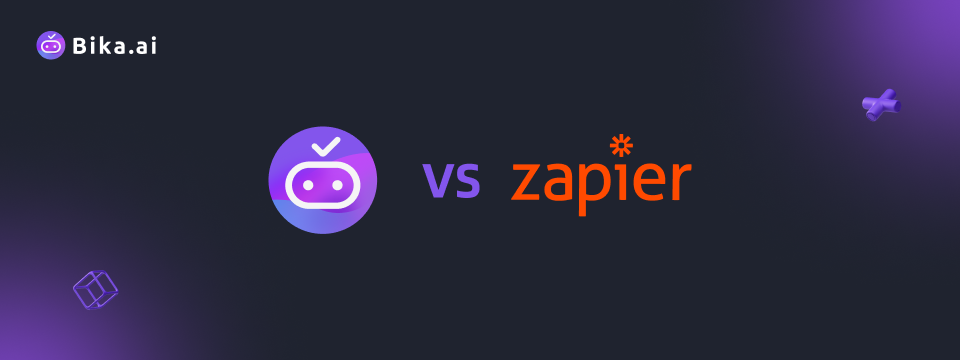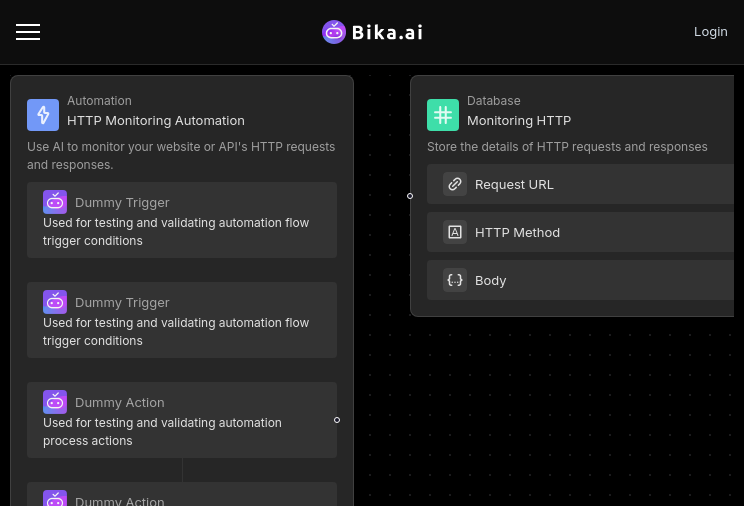
When it comes to choosing a tool for building automated workflows for API endpoint testing, several factors come to mind. The functionality of the tool to meet the specific testing requirements is often the first thought. But is that all? Pricing, undoubtedly, plays a significant role too. Zapier is a common option in the realm of automation, but does its pricing meet your expectations? Let's compare Zapier and Bika.ai across multiple aspects to make a more informed choice.
Zapier is known for its ability to connect various web apps and automate tasks among them. However, it has certain limitations. The separation of its automation and database functionality can make the user experience less seamless and add complexity to workflows. Each component of Zapier, such as its Tables and automation features, comes with its own cost, which can quickly add up.
Bika.ai, on the other hand, is a no-code AI automation database. It offers an easy-to-use platform with features like AI-Agent-enhanced CRM, marketing automation system, project management system, BI, and ERP, all at an attractive price.
When comparing the key features of Zapier and Bika.ai, several differences stand out. In terms of pricing, Zapier's automation starts at $19.99/month, and its database starts at $20/month, while Bika.ai starts at $9.99/month per seat. Automation tasks per month are limited to 750 in Zapier's basic plan, but Bika.ai offers 30,000 runs/month. Database integration is separate in Zapier and comes at an additional cost, while Bika.ai offers an integrated visual database with automation. The maximum number of records is 500,000 for Zapier's highest plan compared to 1,500,000 for Bika.ai. Zapier offers up to 50 tables in its highest plan, while Bika.ai provides unlimited tables. Templates in Zapier lack pre-filled content, while Bika.ai offers plug-and-play templates with detailed guides. Customization in Zapier is limited by app connections and plan limits, but Bika.ai offers extensive customization with an API-first design. Both platforms integrate with over 6,000 apps, but Bika.ai also integrates with Zapier, Make, Pabbly, and others. In terms of data handling, Zapier has limited field types and views, while Bika.ai offers 38 field types and 13 node resources. Proactive automation is absent in Zapier but present in Bika.ai.
Let's take a closer look at the pricing structures of Zapier and Bika.ai. For Zapier's Zaps:
For Zapier's Tables:
Now, looking at Bika.ai's price plans:

If you're considering API endpoint testing, Bika.ai presents several compelling reasons to be your preferred choice. It offers a complete user experience with a fully integrated automation and database. The proactive AI automation ensures that tasks are managed and scheduled without constant manual intervention. High scalability allows it to handle extensive data volumes and complex workflows effortlessly. Cost efficiency is a significant advantage, with more features and higher limits without extra fees. The plug-and-play templates with pre-filled content make setup quick and straightforward.
The HTTP Monitoring template in Bika.ai is a powerful tool. Here's how to use it:
Conclusion In conclusion, Bika.ai's HTTP Monitoring template is a valuable asset for API endpoint testing. It offers real-time monitoring, automated reporting, flexible configuration, integration capabilities, and data security. By choosing Bika.ai and leveraging its HTTP Monitoring template, you can effectively address the challenges of API endpoint testing and enhance the reliability and performance of your systems.


Coming soon




Coming soon